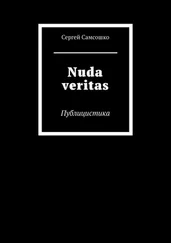Rita Monaldi - Veritas
Здесь есть возможность читать онлайн «Rita Monaldi - Veritas» весь текст электронной книги совершенно бесплатно (целиком полную версию без сокращений). В некоторых случаях можно слушать аудио, скачать через торрент в формате fb2 и присутствует краткое содержание. Жанр: Исторический детектив, на английском языке. Описание произведения, (предисловие) а так же отзывы посетителей доступны на портале библиотеки ЛибКат.
- Название:Veritas
- Автор:
- Жанр:
- Год:неизвестен
- ISBN:нет данных
- Рейтинг книги:3 / 5. Голосов: 1
-
Избранное:Добавить в избранное
- Отзывы:
-
Ваша оценка:
- 60
- 1
- 2
- 3
- 4
- 5
Veritas: краткое содержание, описание и аннотация
Предлагаем к чтению аннотацию, описание, краткое содержание или предисловие (зависит от того, что написал сам автор книги «Veritas»). Если вы не нашли необходимую информацию о книге — напишите в комментариях, мы постараемся отыскать её.
Veritas — читать онлайн бесплатно полную книгу (весь текст) целиком
Ниже представлен текст книги, разбитый по страницам. Система сохранения места последней прочитанной страницы, позволяет с удобством читать онлайн бесплатно книгу «Veritas», без необходимости каждый раз заново искать на чём Вы остановились. Поставьте закладку, и сможете в любой момент перейти на страницу, на которой закончили чтение.
Интервал:
Закладка:
The mythology that surrounds the Place with No Name, it should be noted, was not invented by the authors. Accounts of the ghosts at Neugebäude and Rudolph II’s alchemic experiments as narrated by Simonis regularly emerge in the Viennese newspapers: see the Neues Wiener Tagblatt of 4th April 1940, p. 6 (“Ein Besuch in Wiens Gespensterschloß”, which is to say, “A visit to Vienna’s castle of ghosts”); and the Volkszeitung of 28th January 1940, p. 7 as well as the Neue Freie Presse of 7th September 1937, p. 6. Cases of ghosts that terrorised the Nachtwärter (night sentinels), soldiers guarding Neugebäude when the castle was a military store were reported until at least the nineteenth century. Up to the 1930s the inhabitants of the plain around Simmering avoided Neugebäude for fear of unpleasant encounters.
And the elephant? It is well known that Maximilian II did have an elephant brought to Vienna from the Iberian peninsula, and that a famous inn on the Graben (one of the celebrated streets that form the ancient centre of the city) took its name from i. The inn survived for almost three centuries and was then unfortunately demolished. There is nothing to prevent one from imagining, therefore, that the pachyderm found a home, as the chimney-sweep reports, in the place that Maximilian had chosen for his precious seraglio.
Eugene of Savoy
First of all, the Agha’s little slip of paper. In the documents of Eugene’s military campaigns is a copy of a report to Charles ( Feldzüge des Prinzen Eugen von Savoyen. Nach den Feld-Acten u. anderen authentischen Quellen hrsg. von der Abtheilung für Kriegsgeschichte des k.k. Kriegs-Archives , Vienna 1876–1892, vol. XIII, Suppl. p. 14, chap. 7, Vienna 11th April 1711):
Finally on 7th afternoon the Turkish Agha arrived, to whom I granted audience on 9th. I attach for Your Majesty a copy of the written message that he delivered to me .
What about the original of the message? There is no trace of it in the documents, as the reader who has read the historical appendices to Imprimatur and Secretum will perhaps have already guessed: certain operations are always carried out in the same way, whether it concerns covering up a pope’s misdeeds, forging a king’s will, or endeavouring to conceal a plot to harm an emperor.
What is this message from the Agha and why on earth should Eugene have sent it to Charles? It was to Joseph I that he should have been reporting, unless it was a question that Joseph must not hear of but which Charles already knew about.
The machinations of Atto Melani. Abbot Melani had very cleverly devised the trap of the forged letter from Eugene of Savoy, and he came close to achieving his aim. It was true, as Atto himself recounted, that an apocryphal letter, which attributed to Eugene the project of betraying the Empire, was delivered to Philip V of Spain, who then sent it on to the Sun King and to Torcy, who finally prevented it from going any further, as Atto complained to the chimney-sweep. It was not until May 1711 (about a month after the events described by the chimney-sweep) that Eugene, having arrived in Tournai, in Flanders, was informed of the existence of the letter, but he succeeded in proving his innocence. The whole affair can be read about in Eugene’s correspondence held in the State Archive of Vienna or reproduced in the documents of Eugene’s military campaigns: in particular, the letter in which Count Bergeyck wrote to Eugene that he had received a mandate from Philip I to ask him if the letter was authentic and, if so, to negotiate with him (State Archive of Vienna, Kriegsakten 262, 22.3.1711; Kriegsakten 263, 3.5.1711); Eugene’s indignant reply (State Archive of Vienna, Grosse Korrespondenz 93 a, 18.5.1711), and the letters to the Queen Mother and Regent Eleonore Magdalene Therese and to Charles ( Feldzüge des Prinzen Eugens XIII, Suppl., pp. 32-3, 13 and 17.5.1711) and to Sinzendorf (State Archive of Vienna, Grosse Korrespondenz 73 a, 18.5.1711), in which Eugene sent a copy of Bergeyck’s letter and expressed all his dismay; and finally the answers from the Regent, from Charles and from Sinzendorf, who recognise that he is not in any way implicated (State Archive of Vienna, Grosse Korrespondenz 90 b, 3.6.1711; 31.7.1711; Grosse Korrespondenz 145, 21.5.1711).
Atto’s analysis of the relations between Eugene, Joseph and Charles reflects the historic reality with surprising accuracy. For example, it is true, as Atto claims, that Eugene managed to have more influence at Charles’s court than at that of the unfortunate Joseph. Eugene would, in fact, manage to persuade Charles to continue the War of the Spanish Succession all alone, when the allies had already made peace with France. Then, not content with this, he would proceed to the war on the Turkish front.
But above all, the jealousy Eugene felt towards Joseph as recounted by Atto Melani is far from unfounded. It is historically authenticated that Eugene was excluded from the Battle of Landau of 1702 so that the stage would be left free for Joseph, as Onno Klop reports ( Der Fall des Hauses Stuart , vol.11, Vienna 1885, p. 196). Furthermore, it is true that Joseph did not allow Eugene to go and fight the French in Spain, where Eugene had hopes of achieving great things, as Onno Klopp recounts ( Der Fall op. cit. , t. XXIV p. 12 ff.).
Atto Melani’s reflections on the personality of Eugene of Savoy are also perfectly in keeping with the reality of the historical documents. It is not surprising that official historiography devotes little attention to the murkier side of the great condottiere . In all the thousands of books and articles (over 1,800 have been counted) that have been published over the last three centuries celebrating Eugene, hardly any reference is to be found to his private life. The reason is very simple. Eugene left no personal papers: only letters of war, diplomacy and politics. Nor can any private correspondence worthy of the name be found in the archives of the numerous personalities who corresponded with him. There does not seem to have been any personal or intimate side to his existence: all we see is his granite-like exterior as a soldier, diplomat and statesman. An almost inhuman heroic figure, who has no room for feelings, weaknesses or doubts.
As for women, none seem to have left any mark on this bellicose monolith. Eugene, one of the richest and most celebrated (and hence one of the most eligible) men of the age, never married. A few women have been associated with his name, above all Countess Eleonore Batthyany, his “official lover” from 1715 onwards. But even in what remains of his correspondence with her, no trace can be found of an intimate relationship in the real sense of the word. Perhaps the female sex was more useful than congenial to Eugene: it seems to be historically proven that the condottiere , as the chimney-sweep writes in December 1720, set up Countess Pálffy, Joseph’s very young lover, in Porta Coeli Street (and so close to his own palace) so that he could watch over her and exploit her more easily (Max Braubach, Prinz Eugen von Savoyen , Vienna 1964, vol.3 pp. 21-2). The Viennese postman Johann Jordan, in his Schatz /Schutz / und Schantz Deß Ertz-Herzogthumbs Oesterreich , a carefully compiled street guide printed in 1701, reports on page 107 that a certain Agnes Sidonia Countess Pálffy, an old relative of Joseph’s lover, lived in the Strassoldo House in Himmelpfortgasse, the building owned by von Strassoldo, the directress of the convent’s novitiate (cf. Alfons Žák, Das Frauenkloster Himmelpforte in Wien , Vienna, 1906). A few years before Marianna arrived, therefore, the Strassoldo House had already been occupied by another woman from the Pálffy family.
Читать дальшеИнтервал:
Закладка:
Похожие книги на «Veritas»
Представляем Вашему вниманию похожие книги на «Veritas» списком для выбора. Мы отобрали схожую по названию и смыслу литературу в надежде предоставить читателям больше вариантов отыскать новые, интересные, ещё непрочитанные произведения.
Обсуждение, отзывы о книге «Veritas» и просто собственные мнения читателей. Оставьте ваши комментарии, напишите, что Вы думаете о произведении, его смысле или главных героях. Укажите что конкретно понравилось, а что нет, и почему Вы так считаете.











